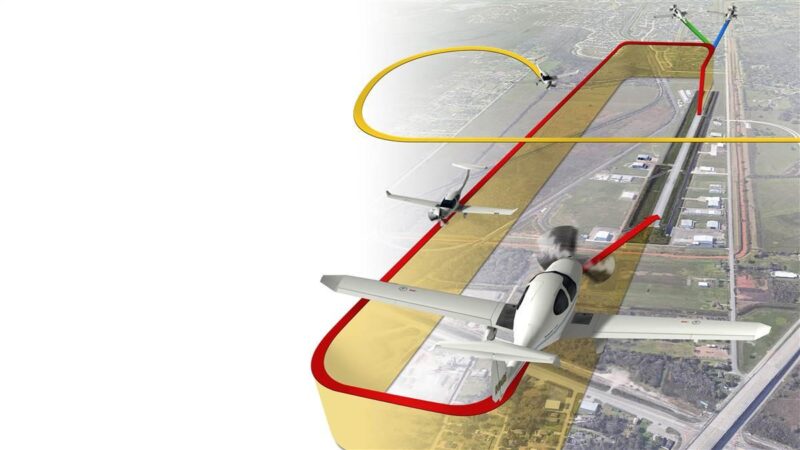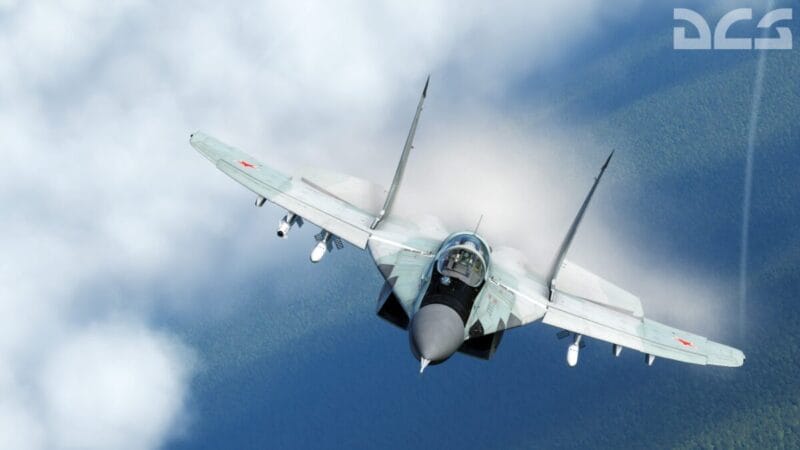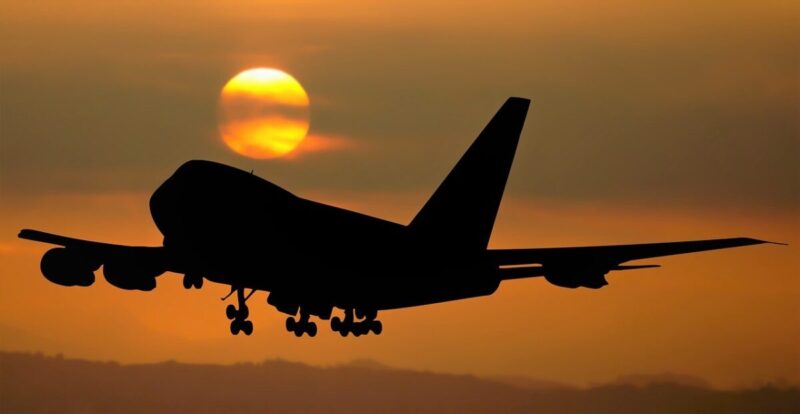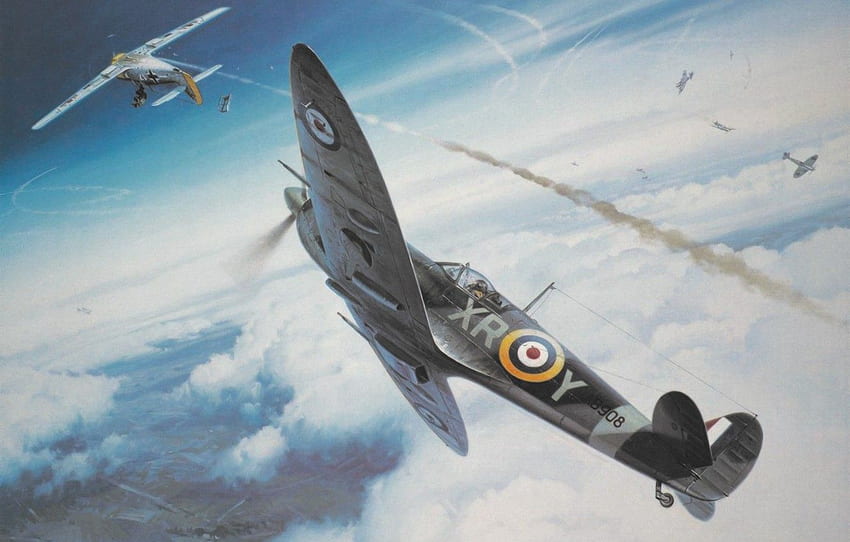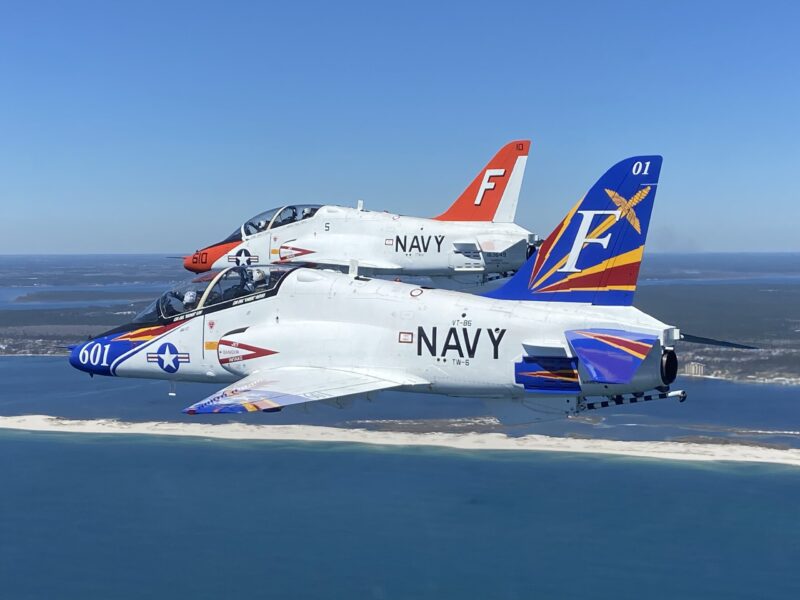Comprehensive Tutorial: How to Enter the Circuit to Land Safely in a Flight Simulator (Pt-7)
Remember Pilots – “Takeoffs are optional – Landings are Monitory!”
How to enter the circuit to land safely in a Flight Simulator is a required skill. Landing is one of the most critical phases of flight, where poor technique and uncoordinated control inputs can lead to disastrous outcomes, even in a flight simulator. This tutorial explains how to enter the circuit, join the pattern, and execute a safe approach and landing. Special attention is given to yaw coordination, the dangers of adverse yaw, and avoiding stall-spin scenarios—common risks during the final turn.
Disclaimer: This tutorial is for flight simulation purposes only. Real-world flying procedures should always be practiced under the guidance of a Qualified Flying Instructor (QFI).
Understanding the Traffic Circuit (Pattern)
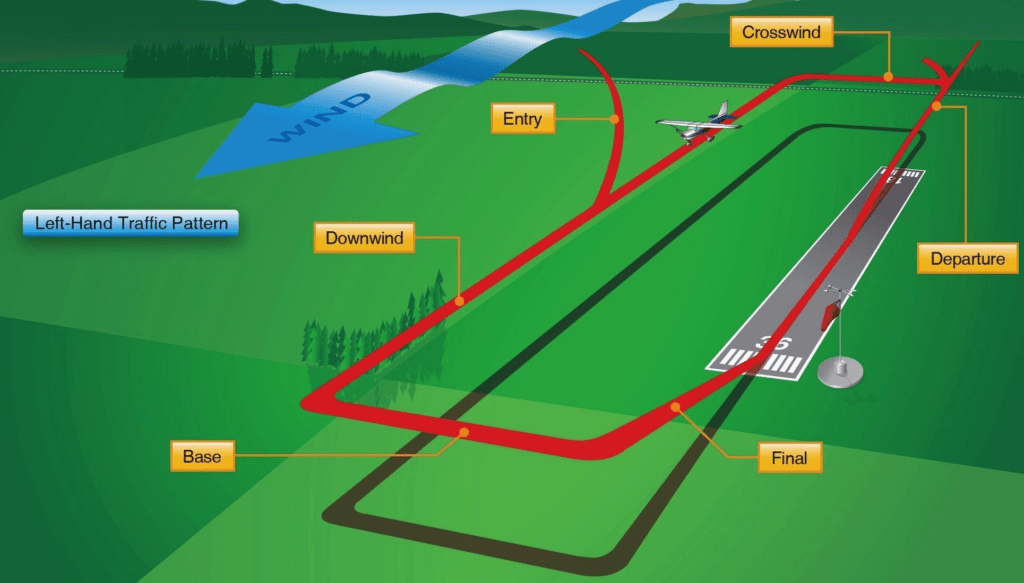
The traffic circuit is a rectangular flight path around an airport used to sequence aircraft for landing. The standard circuit consists of the following legs:
- Upwind: Extends straight out from the runway.
- Crosswind: A 90° turn away from the runway.
- Downwind: Parallel to the runway in the opposite direction of landing.
- Base: A 90° turn toward the runway.
- Final: The straight-in approach to land.
Aircraft typically fly circuits at 1000 feet Above Ground Level (AGL) in a left-hand pattern unless otherwise specified. A right-hand pattern may be indicated by local regulations or NOTAMs.
How to Enter the Circuit to Land Safely in a Flight Simulator – Key Concepts for Circuit Entry

1. Joining the Circuit
You can approach the circuit from any angle, but it is vital to integrate smoothly into the flow of traffic. Common entry points include:
- 45° to the Downwind Leg: The standard entry point for most airports.
- Overhead Join: Used when arriving directly over the airport.
- Straight-In Approach: Used with ATC clearance.
- Crosswind Join: For arrivals perpendicular to the runway.
2. Circuit Altitude
- Establish and maintain 1000 feet AGL before entering the circuit.
- Use the altimeter and simulate ATIS or local information to determine the correct altitude.
3. Communication
- Announce your intentions using the simulator’s ATC (or online networks like VATSIM). Example: “Cessna N12345, joining downwind for Runway 27.”
How to Enter the Circuit to Land Safely in a Flight Simulator – Entering the Circuit from Different Angles
1. 45° Downwind Entry (Preferred)
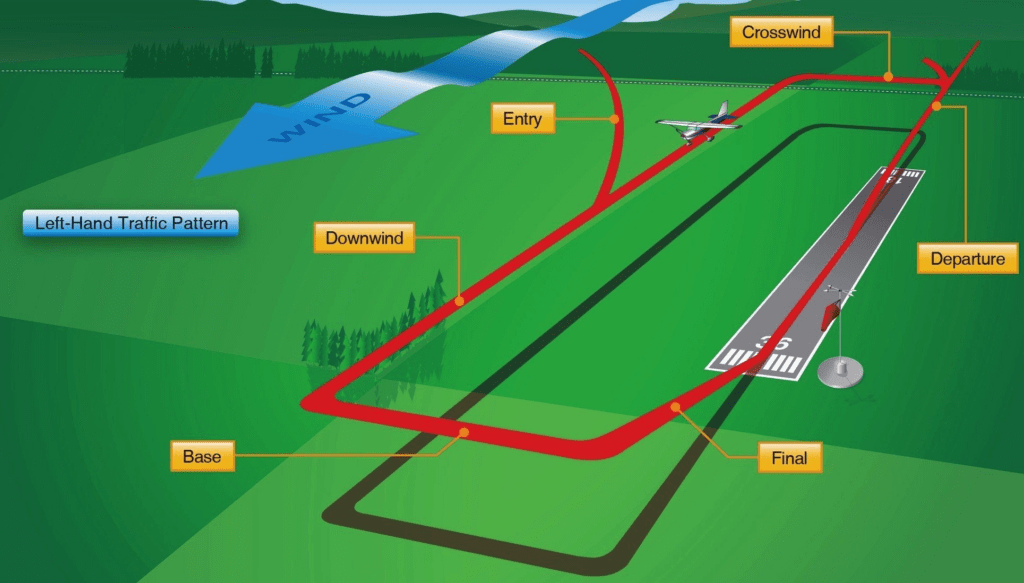
- Approach:
- Approach the downwind leg at a 45° angle, ensuring you’re at 1000 feet AGL and at the circuit speed (~90 knots for the Cessna 172).
- Entry:
- Turn onto the downwind leg, parallel to the runway, maintaining a steady altitude and speed.
- Action:
- Perform the pre-landing checklist:
- Fuel selector: BOTH.
- Mixture: FULL RICH.
- Carb heat: ON (if applicable).
- Flaps: As needed for descent.
- Perform the pre-landing checklist:

2. Overhead Join
- Approach:
- Arrive over the airport at 2000 feet AGL, 1000 feet above the circuit altitude.
- Positioning:
- Fly over the runway in the landing direction, then descend in a spiral turn to join the downwind leg at 1000 feet AGL.
- Action:
- Ensure smooth descent and coordination throughout the turn to avoid overshooting or uncoordinated flight.
3. Straight-In Approach
- Approach:
- Align directly with the final approach, ensuring you’re descending toward circuit altitude early enough for a stabilized approach.
- Clearance:
- Obtain ATC clearance or ensure no conflicting traffic.
- Action:
- Maintain a steady descent, keeping the aircraft aligned with the runway centerline.

4. Crosswind Join
- Approach:
- Arrive perpendicular to the runway, level at 1000 feet AGL.
- Entry:
- Turn onto the crosswind leg, then onto downwind, integrating into the circuit.
- Joystick / HOTAS – AMAZON.com
- Rudder Pedals – AMAZON.com
- Throttle Quadrant – AMAZON.com
- Gaming Chair – AMAZON.com
- VR Headset – AMAZON.com
Flying the Circuit
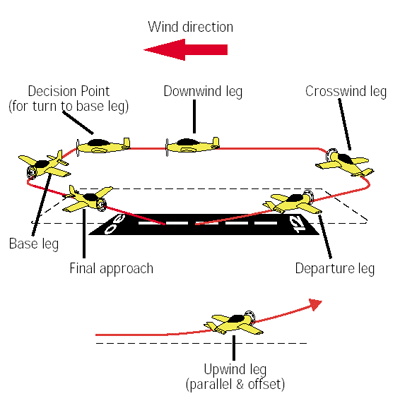
1. Downwind Leg
- Speed: ~90 knots.
- Altitude: 1000 feet AGL.
- Maintain coordination: Keep the slip/skid ball centered. Use rudder to counter any drift or adverse yaw.
2. Base Leg
- Reduce speed to ~80 knots.
- Apply initial flap settings (10°-20°).
- Begin a gentle descending turn toward final.
The Importance of Yaw Coordination in the Final Turn
What Is Yaw?
- Yaw is the side-to-side movement of the aircraft’s nose, controlled by the rudder.
What Is Adverse Yaw?
- Adverse yaw occurs when the upward-deflecting aileron (on the descending wing) creates more drag than the downward-deflecting aileron (on the ascending wing).
- This causes the nose to yaw in the opposite direction of the turn, making the aircraft uncoordinated.
Why Coordination Matters
- High Angle of Attack (AOA): In a slow-speed, high-AOA condition (common during the final turn), uncoordinated flight increases the risk of a stall.
- Stall-Spin Danger: If one wing stalls more than the other (due to uncoordinated yaw), the aircraft can enter a spin. This is a leading cause of fatal accidents in real-world aviation.
- The process of ADVERSE YAW is where the high wing stalls which is counter intuitive as you would expect the inside wing to stall first. It’s all about AOA and the outer wing exceeds its MAX AOA and stalls throwing the aircraft into a right spin even if you’re turning left initially. Generally fatal if turning at 500ft AGL onto final where it happens most often. BE AWARE AND COORDINATE YOUR YAW in FLIGHT!
Executing the Final Turn
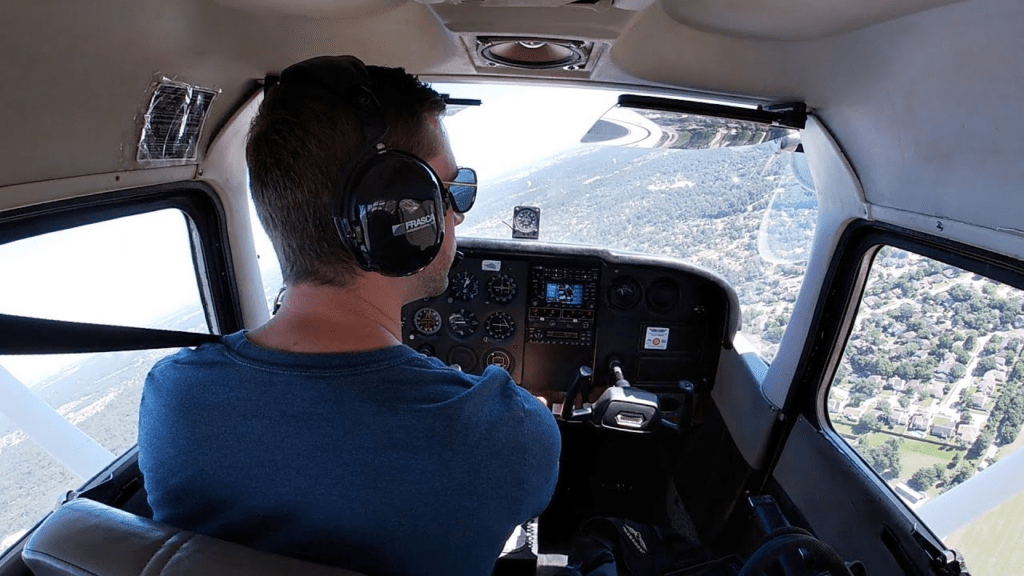
- Maintain Coordination:
- Use rudder to keep the turn coordinator ball centered throughout the turn.
- Avoid “skidding” the turn by overusing rudder, which can exacerbate stall-spin tendencies.
- Manage Speed and Flaps:
- Reduce speed to 70 knots.
- Deploy additional flaps (20°-30°) as needed.
- Control Descent:
- Monitor your rate of descent (typically ~500 FPM).
- Use pitch to control airspeed and power to manage the descent rate.
- Align with the Runway:
- Roll out of the turn smoothly, aligning the aircraft with the runway centerline.
Final Approach and Landing
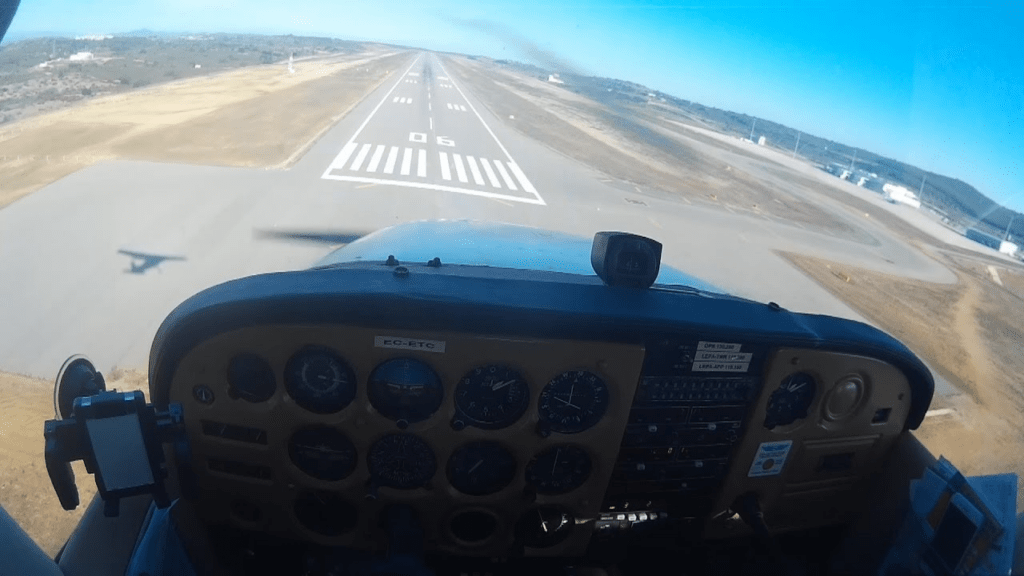
- Speed and Flaps:
- Reduce speed to 60 knots (landing reference speed, VREFV_REF) for a stabilized approach.
- Yaw Control:
- Use small rudder inputs to correct for any drift and maintain alignment with the runway.
- Touchdown:
- Flare gently at ~10 feet above the runway to reduce descent rate.
- Touch down on the main wheels first, keeping the nosewheel off the ground until speed decreases.

Common Mistakes and How to Avoid Them
- Uncoordinated Turns:
- Always monitor the turn coordinator and keep the ball centered with rudder inputs.
- Overshooting Final:
- Avoid steep or rushed turns to correct alignment. Plan your base-to-final turn early.
- Improper Flap Use:
- Deploy flaps incrementally to avoid sudden changes in lift and drag.
- High or Low Approaches:
- Use power adjustments early to correct the descent profile.
Practice Exercises for Simulator Pilots
- Basic Circuit Entry:
- Practice joining the circuit at a 45° downwind entry, maintaining altitude and speed.
- Overhead Joins:
- Simulate an overhead join, descending smoothly into the pattern.
- Final Turns:
- Practice base-to-final turns at various speeds, focusing on yaw coordination.
- Replay and Analyze:
- Use simulator replay features to review your turn coordination and landing alignment.
- Latest CPU’s Available Now – Amazon.com
- Get a NEW GPU Best Performance – AMAZON.com
- Upgrade RAM Here today – AMAZON.com
- Prebuilt PC Options – AMAZON.com
Enter the Circuit to Land Safely – Conclusion
Circuit entry and landing require precision, coordination, and situational awareness. Proper yaw management and understanding of adverse yaw are crucial to avoiding stall-spin scenarios, especially during the final turn. By practicing these techniques in a simulator, you’ll develop the skills needed to execute safe and professional landings.
Reminder: Always consult a Qualified Flying Instructor (QFI) for real-world application of these procedures. (Pt- )
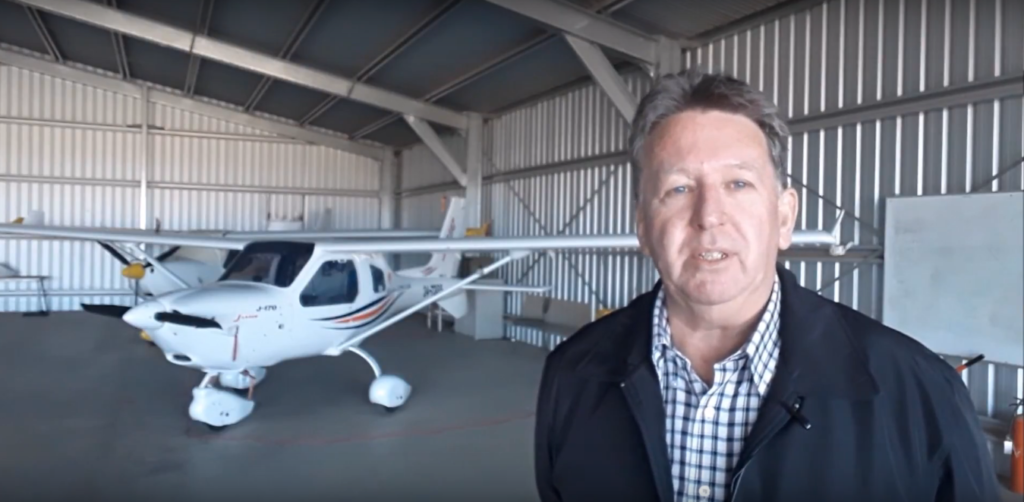
Author
Brendon McAliece (Aka Gunnie) is a military veteran with 23 years working on Jet Fighters, their weapons systems and ejection seat/module systems as well as munitions and R&D. Involved with flight simulation since the 1980s, he has flown all the major flight simulators over the years.
He is an Australian expat who has lived in Malaysia, UK, Saudi Arabia and more recently Thailand. He is a multi-lingual blogger who loves to share his life experiences here on LetsFlyVFR.com and DreamingGuitar.com, with his lifestyle and Travel experiences Blog plus his Dreaming Coffee website.
Learn More @ DreamingGuitar.com – DreamingCoffee.com – LetsFlyVFR.com
( HOME – BLOG – SHOP – ABOUT )
As an Amazon affiliate I may benefit from qualifying sales.
